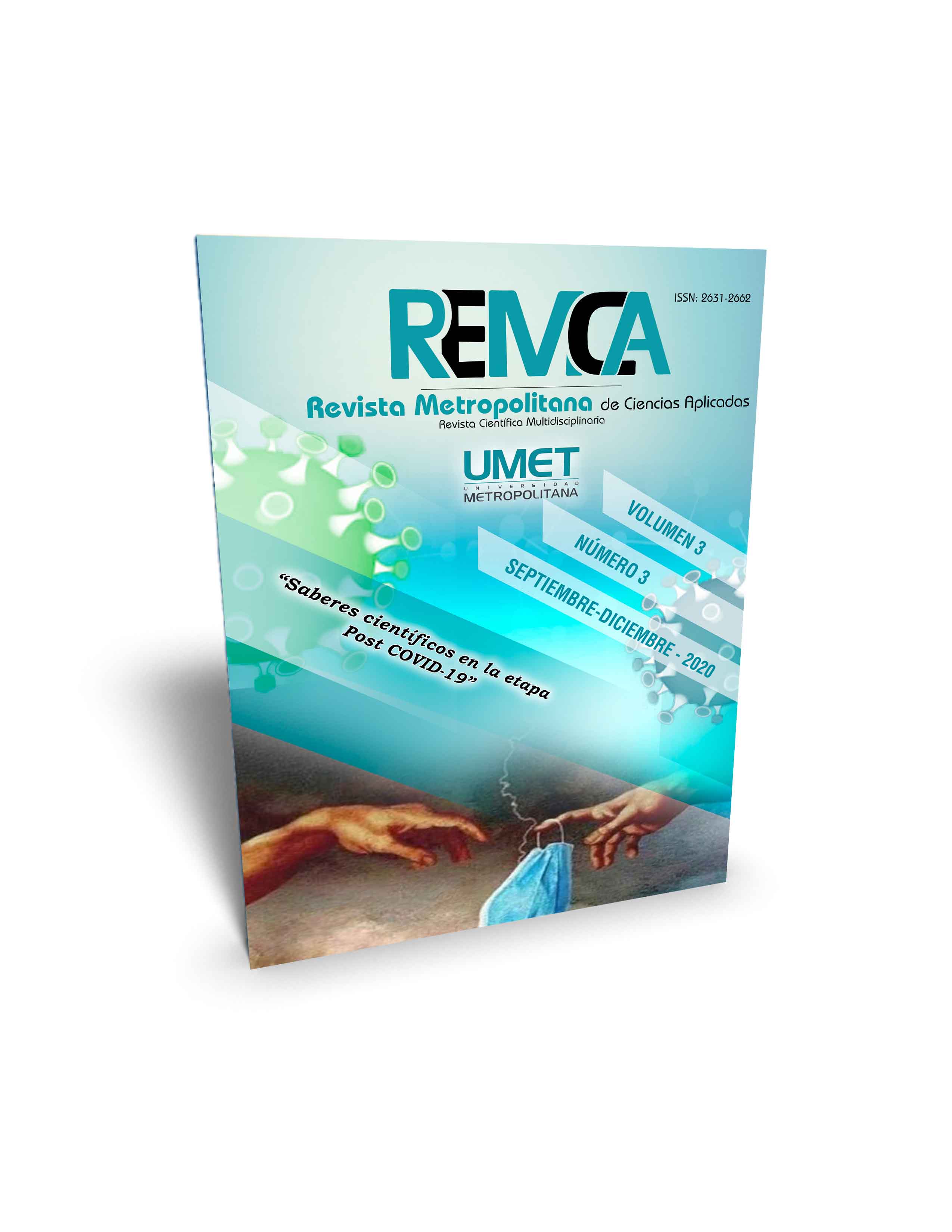Are teaching resources used in teaching mathematics in basic elementary education? A case study
DOI:
https://doi.org/10.62452/a21d1302Keywords:
Teaching resources, skills, motivation, interest and mathematicsAbstract
The purpose of the article is to publicize the use of teaching resources used by teachers to promote students' interest in mathematics. The objective was to determine if didactic resources are used for the teaching of mathematics. The research was qualitative and quantitative, for which theoretical methods such as analysis and synthesis were used, logical historical, as well as for the field study a questionnaire structured by 4 dimensions was applied, distributed in 12 items that was applied to 28 students and 1 teacher; Among the results achieved are the low use of teaching resources in the teaching-learning process. It is concluded that there is a predominance of traditional teaching centered on the teacher, little participation of the student in the application of the exercises and therefore loss of interest of the students in mathematics.
Downloads
References
Aguado, L. (2014). Emoción, afecto y motivación. Alianza Editorial.
Aragón, E., Castro, C., Gómez, B., & González, R. (2009). Objetos de aprendizaje como recursos didácticos para la enseñanza de matemáticas. Apertura: Revista de Innovación Educativa, 1(1), 100-111,
Bedoya, M., Pérez, B. Gloria, E., Pérez, G., & Duque, V. (2016). El juego dirigido como medio para propiciar la motivación en los estudiantes del tercero grado. (Tesis especialista). Fundación Universitaria los Libertadores.
Burgo, O., León, J., Cáceres, M., Pérez, C., & Espinoza, E. (2019). Algunas reflexiones sobre investigación e intervención educativa. Revista Cubana de Medicina Militar, 48(2).
Cantoral, R., & Farfán, R. (2003). Matemática Educativa: una visión de su evolución. Revista oficial del comité Latinoamericana de Matemática Educativa, 6(1), 27-40.
Castejón, J, L. (2009). Aprendizaje, desarrollo y disfunciones implicaciones para la enseñanza de la educación secundaria. Editorial Club Universitario.
De la Rosa, A., Toro, K., Jaén, K., & Espinoza, E. (2019). El proceso de enseñanza-aprendizaje en las ciencias naturales: las estrategias didácticas como alternativa. Revista Científica Agroecosistemas, 7(1), 58-62.
Espinoza, E. (2018). Los medios como componentes del proceso de enseñanza-aprendizaje en estudios sociales en Machala, Ecuador. Maestro y Sociedad, 15(3), 359-373.
Gómez, M. E. (2003). Adivinanzas: un recurso didáctico para la enseñanza del lenguaje. Educere, 6(20), 430-434.
Gómez, P., & Benavides, M. (2011). Adecuación del lenguaje en el material didáctico escrito: el proceso de producción como proceso pedagógico. Revista Electrónica Actualidades Investigativas en Educación, 11(2), 1-14.
Guamán, V., Espinoza, E., Herrera, L., y Herrera, E. (2019). Reflexiones acerca de la investigación social en la Carrera en Educación del Ecuador. Revista Universidad y Sociedad, 11(5), 437-446.
Guerrero, I. (2018). Estrategias motivadoras para generar hábitos de lectura. (Tesis segunda especialización). Pontificia Universidad Católica del Perú.
Huambaguete, C. (2012). Recursos didácticos para el proceso de enseñanza-aprendizaje en el área de Lenguaje, del quinto año de Educación General Básica del Centro Educativo Comunitario San Antonio, de la comunidad Santa Isabel, Parroquia Chiguaza, cantón Santa Isabel, periodo lectivo 2010-2011. (Tesis de Licenciatura). Universidad Politécnica Salesiana de Cuenca.
Murillo, J., Román, M., & Atrio, S. (2016). Los Recursos Didácticos de Matemáticas en las Aulas de Educación Primaria en América Latina: Disponibilidad e Incidencia en el Aprendizaje de los Estudiantes. Archivos Analíticos de Políticas Educativas, 24(1), 1-22.
Ortiz, L. (2002). El aprendizaje de las matemáticas, un problema social. Gaceta Universitaria. http://www.gaceta.udg.mx/Hemeroteca/paginas/258/258-1415.pdf
Pastuizaca, E., & Galarza, M. (2010). Recursos didácticos en el aprendizaje significativo de las matemáticas. (Tesis de Licenciatura). Universidad Estatal de Milagro.
Pilco, N. (2013). La utilización de los recursos didácticos en la enseñanza aprendizaje de la matemática y su incidencia en el rendimiento académico de los estudiantes del segundo año de bachillerato general unificado del colegio “Amelia Gallegos Díaz” año lectivo 2012 – 2013. (Tesis de Licenciatura). Universidad Nacional del Chimborazo.
Downloads
Published
Issue
Section
License
Copyright (c) 2020 Jonathan Carlos Ordoñez Pardo, Elizabeth Carolina Coraisaca Quituizaca, Eudaldo Enrique Espinoza Freire (Autor/a)

This work is licensed under a Creative Commons Attribution-NonCommercial-ShareAlike 4.0 International License.
Authors who publish in Revista Metropolitana de Ciencias Aplicadas (REMCA), agree to the following terms:
1. Copyright
Authors retain unrestricted copyright to their work. Authors grant the journal the right of first publication. To this end, they assign the journal non-exclusive exploitation rights (reproduction, distribution, public communication, and transformation). Authors may enter into additional agreements for the non-exclusive distribution of the version of the work published in the journal, provided that acknowledgment of its initial publication in this journal is given.
© The authors.
2. License
The articles are published in the journal under the Creative Commons Attribution-NonCommercial-ShareAlike 4.0 International License (CC BY-NC-SA 4.0). The terms can be found at: https://creativecommons.org/licenses/by-nc-sa/4.0/deed.en
This license allows:
- Sharing: Copying and redistributing the material in any medium or format.
- Adapting: Remixing, transforming, and building upon the material.
Under the following terms:
- Attribution: You must give appropriate credit, provide a link to the license, and indicate if any changes were made. You may do this in any reasonable manner, but not in any way that suggests the licensor endorses or sponsors your use.
- NonCommercial: You may not use the material for commercial purposes.
- ShareAlike: If you remix, transform, or build upon the material, you must distribute your creation under the same license as the original work.
There are no additional restrictions. You may not apply legal terms or technological measures that legally restrict others from doing anything the license permits.




